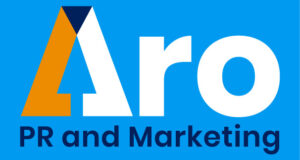Integrated marketing is crucial for creating growth and sustainable success. Here we look at the importance of this to create a successful company image.
Integrated marketing communications is the process of unifying a company’s messaging to make it consistent across all channels that it uses to reach its target audience.
This strategy reinforces identity, increases customer trust, and maximizes the impact of all marketing, whether that is social media, trade exhibitions/conferences, advertising or PR through specialist magazines, making sure these are cohesive with your company’s main message.
Being consistent not only helps in building stronger company recognition but also ensures that marketing resources are used efficiently, increasing visibility and increasing return on investment.
The biggest benefit of integrated marketing is building trust with your audience with consistent messaging and getting the message across. Seeing the same ideas and values across all channels through which the company communicates, means the audience knows what to expect from you and ultimately be more trusting – they’ll think these guys don’t change what they say because they think it’s what I want to hear, and they just want to make a sale. This is what they do.
It is a more efficient way of communicating and ensuring what you want the audience to hear cuts through. Just because a sales message is presented to a potential customer doesn’t mean that they will hear it. They might be distracted by the phone or one of their million and one things that get in the way every day.
However, if you keep presenting the same message to them so that they see it often in different places, they are more likely to respond.
Integrated marketing can be particularly helpful for SMEs in the engineering and science sectors. For smaller businesses often with lower budgets, this is where you can get more for your buck, optimizing the budget and helping it go further, making it work harder for you.
Additionally, scientific and engineering companies often have a very specific target audience. Integrated marketing reaches a niche audience by using targeted messages across multiple channels, ensuring consistency and relevance. By leveraging platforms like social media, and industry-specific publications, businesses can effectively engage their audience, explaining their capabilities. Engaging with niche communities through forums and events further establishes the business’ credentials, driving higher engagement and loyalty.
And it is vital that all this integrated awareness generation is integrated with sales activity, including email campaigns, telemarketing and what the sales team are saying on the phone or in their meetings with customers.
Here is one model of the steps you should take when planning an integrated marketing campaign. The first and most important is to make ‘SMART’ (Specific, Measurable, Achievable, Realistic, Timely) objectives. You should then decide which marketing channels will achieve these objectives.
Here are a few of the ‘channels’ that you should keep in mind:
- Advertising (Print & PPC)
- Direct marketing
- PR
- Sales promotions
- Digital marketing
- Social media
- Events and sponsorships
When deciding which channels to use, you must also keep in mind which audience comes with each. For example, Instagram has a more heavily focused viewership of 18–25-year-olds. Whereas LinkedIn has an older 25-34.Therefore, you must carefully select which channels you wish to be on whether you want to reach young people starting their careers, or more experienced professionals.
With this, you also need to ensure you are adjusting your content accordingly and addressing your desired audience in the right way. LinkedIn demographics are particularly interesting for engineering and scientific companies as this is one of the best places to reach their intended audience.
The adaptability of your content is essential to use on different outlets. For example, say you create a 2-minute YouTube advert. This could then be repurposed as a 30-second video or still image for a social media post or hosted on your website or playing in the background of your stand at an exhibition. As you develop and repurpose these creative assets, keep them aligned with your company image and consistent in the messaging.
For engineering and scientific companies, the potential is huge. They can showcase their capability with detailed case studies, published on their website, on LinkedIn, through specialist media.
They can celebrate successful projects with webinars explaining complex technologies.
Overall, integrated marketing plays a key role in guiding your customers through the sales funnel by ensuring consistency across various channels and touchpoints. By attracting potential customers, engaging them with valuable information, facilitating decision-making, and fostering loyalty, integrated marketing maximizes effectiveness and drives both short-term conversions and long-term revenue growth.
If you would like to know more about integrated marketing and the sales funnel, contact us today – email info@aroprandmarketing.co.uk or phone 0117 379 0008.

